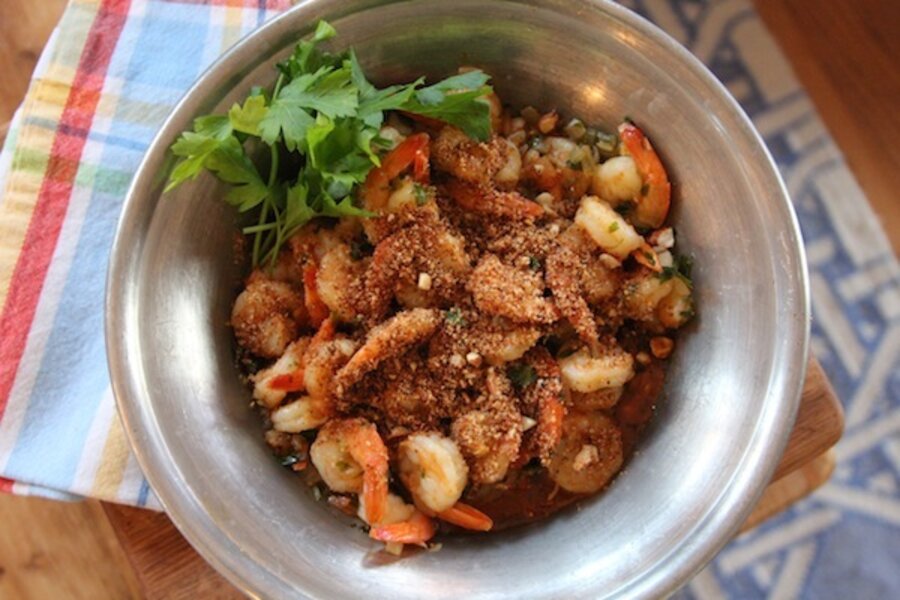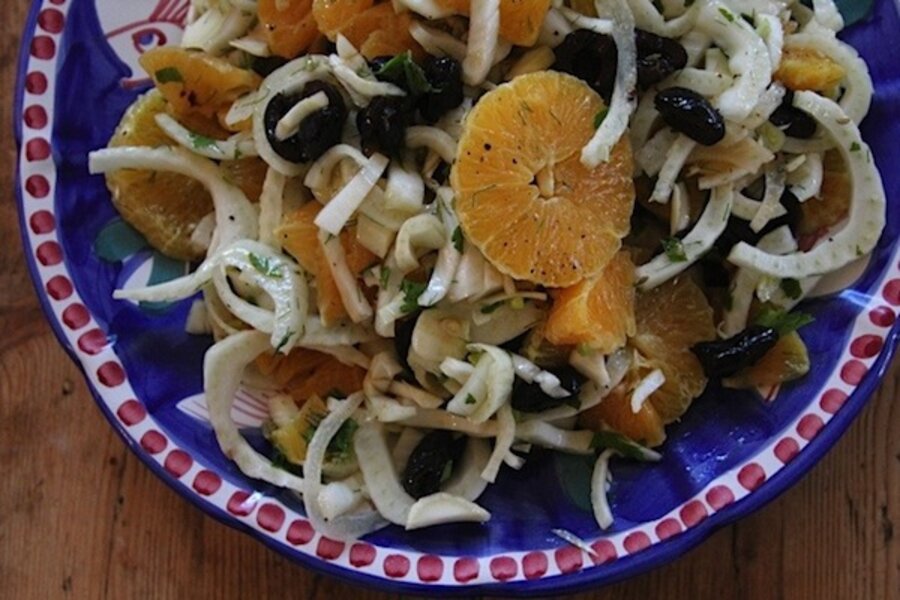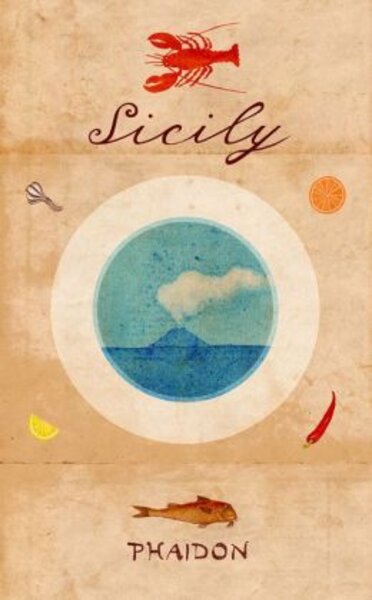The original fusion food: Sicilian
Loading...
Sicily is a long way from California where I live. But one can travel through food and that’s what I did with the new travel-worthy cookbook Sicily from the editors of Phaidon Press Limited.
The book is a compilation of more than 50 recipes with narrative text by noteworthy chef Pamela Sheldon Johns. Recipes are accompanied by gorgeous full-page Edward Park photographs. The preface of "Sicily" provides a short but insightful history into the island explaining that many different cultures have been master to her culinary puzzle. Arab influence can be found in savory couscous dishes and sweets draped with marzipan. A heavy reliance on almonds and toasted sesame seeds also came courtesy of the Arabs. Greek rule brought eggplants, oranges and apricots. The cookbook calls it the original fusion cuisine. I think that’s right. To understand Sicilian history is to understand her food. It should never be called Italian. It is Sicilian.
For the reader, the cookbook is broken up into nine chapters corresponding with the nine Sicilian provinces of Trapani, Palermo, Agrigento, Caltanissetta, Messina, Enna, Catania, Ragusa, and Siracusa. Ms. Sheldon Johns has crafted an introduction to each section that is followed by traditional mouthwatering recipes. You can read the book straight through or skip around as I did, as a virtual traveler, selecting that area that most interests you first.
I spent some extra time in the chapter on the Agrigento province as my grandfather was born in the tiny hilltop town of Santa Margherita di Belice. I was curious about the food he enjoyed as a young Sicilian. Pasta con sarde, or pasta with fresh sardines, is part of our family lore and the cookbook did not disappoint. Fresh sardines and fresh anchovies are nothing like the dried, canned and salted versions that often top our pizza here in the United States. When fresh, they both have a very delicate and light ocean taste. Last summer while vacationing on the Italian coast of Cinque Terre, I had anchovies soaked in lemon juice that tasted nothing like their salted dried cousins. If you have any problems finding sardines in your local grocery store, they can often be found in Japanese markets. Ask for iwashi, that’s sardines in Japanese.
Last Saturday, I treated my parents to a Sicilian dinner with gamberi con la conza, which is a shrimp dish from the Agrigento area topped with a mixture of toasted almonds and breadcrumbs called conza. Conza, which Sheldon Johns explains, is often called a poor man’s cheese. Lest you think this means that it’s second best to cheese, think again. We not only sprinkled the conza liberally on our gamberi (shrimp) but also put heaping spoonfuls directly into our mouths. The satisfyingly crunchy nutty taste was a perfect accompaniment to the simple shrimp dish sautéed in garlic, olive oil, chili powder, and a scant one half cup of dry white wine.
I chose to complement the gamberi con la conza with insalata di arance, a traditional Sicilian salad of oranges, fresh fennel, and roasted olives. The sweetness of the oranges and the crunchiness of the faintly licorice-tasting fennel was a perfect companion to the strong garlic and chili spices of the shrimp. Both dishes were easy to prepare ahead of time, although one must allow time to assemble the components at the last minute.
Gamberi con la conza (Shrimp with conza)
From "Sicily" by Phaidon Press editors
Preparation time: 15 minutes
Cooking time: 40 minutes
Serves 6
5 tablespoons olive oil
1 small onion, chopped
1 clove garlic, chopped
1 bunch of flat-leaf parsley, chopped
1/2 teaspoon chilli powder
500 grams (l lb. 2 ounces) uncooked peeled prawns (shrimp), deveined
100 milliliters (3-1/2 ounces or scant 1/2 cup) dry white wine
Salt
1. Heat the olive oil in a heavy pan, add the onion, garlic, and parsley and cook over a medium-high heat, stirring frequently, for a few minutes, then add the chilli powder and prawns (shrimp). Cook, stirring occasionally, for a few minutes.
2. Drizzle in the wine and cook for 5 minutes, until completely evaporated. Remove from the heat and season to taste with salt.
For the conza:
1 tablespoons olive oil
100 grams (3-1/2 ounces or 2 cups) fresh breadcrumbs
1 heaped tablespoon grated Parmesan cheese
Pinch of chopped flat-leaf parsley
Salt
1. Heat the olive oil in a non-stick frying pan or skillet. Add all the conza ingredients, season with salt and cook over a medium heat, stirring constantly with a wooden spoon to prevent the mixture from burning. It will be ready when it is golden brown. Serve immediately with the prawns.
Insalata di arance (Orange salad)
3-4 fennel bulbs, thinly sliced, fronds reserved
8 oranges
100 grams (3-1/2 ounces or 1 cup) roasted olives
For the dressing:
5 tablespoons of olive oil
Juice of 1/2 lemon, strained
2 tablespoons chopped flat-leaf parsley
Reserved fennel fronds
1 teaspoon fennel seeds (optional)
Salt and pepper
1. First make the dressing. Whisk together the olive oil, lemon juice, parsley, fennel fronds, and fennel seeds (if using), in a bowl and season to taste with salt and pepper.
2. Cut off the peel from the oranges, removing all traces of bitter white pith. Cut the flesh into rounds, put them into a large salad bowl and add the fennel and olives.
3. Drizzle the dressing over the salad, mix well and serve immediately.







